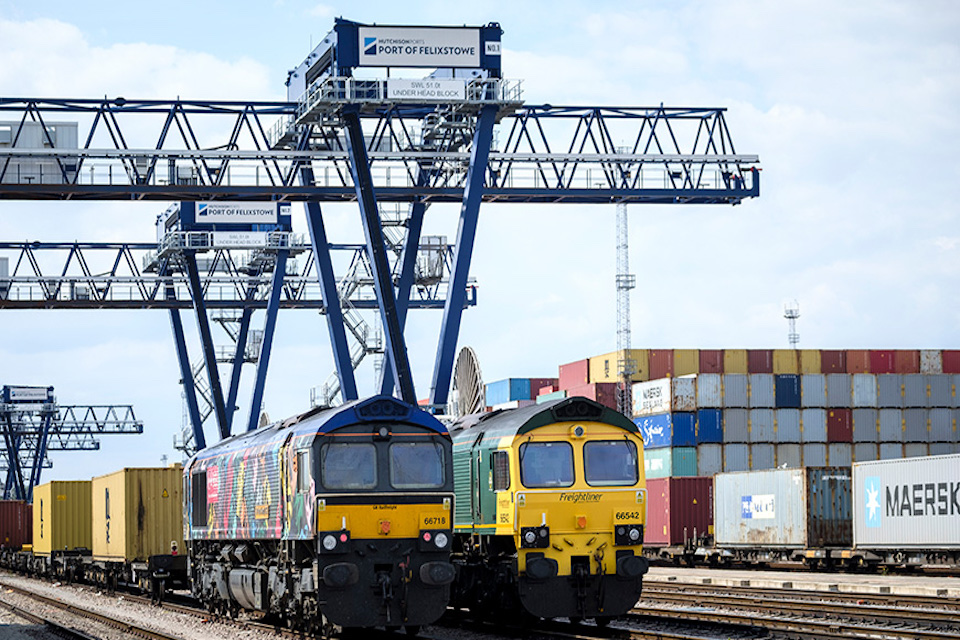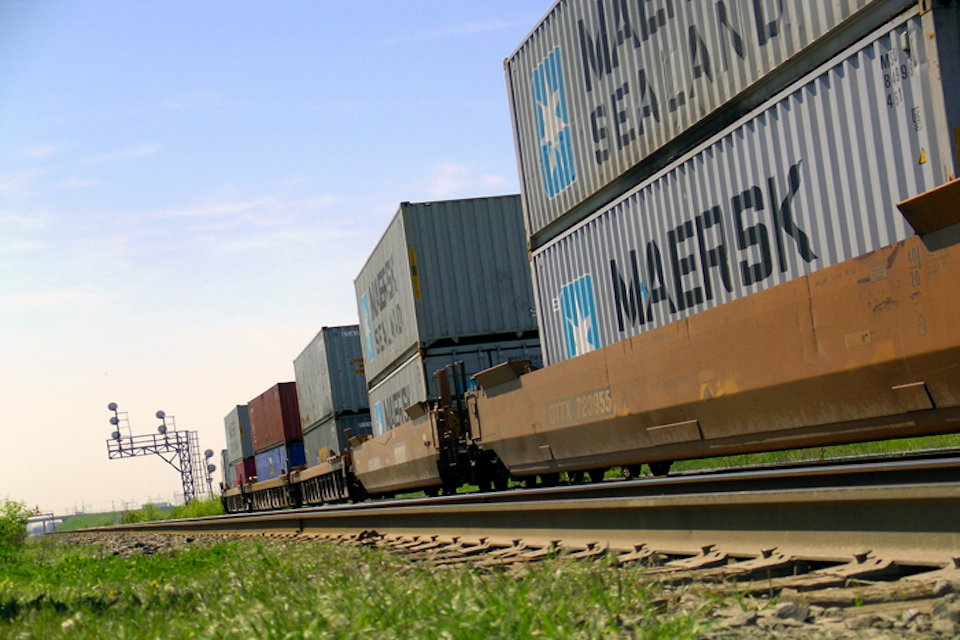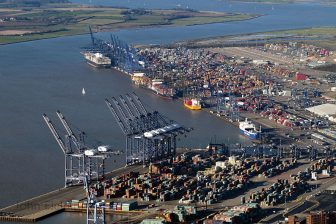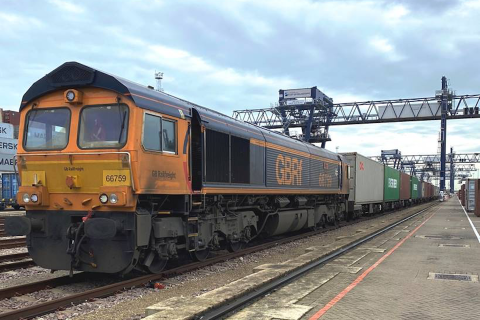Post-lockdown surge at UK ports, rail can help

Britain’s largest intermodal port Felixstowe saw disrupted global trade flows result in traffic backed up at the quayside. With road traffic struggling to cope, rail operators have been asked to respond, and take up the extra burden. That is something the industry would be willing to do, if the resources are there.
The operators of Felixstowe, the multi-national Hutchison Ports, say that their facility, nearby the historic city of Ipswich, continues to experience very high demand for road and rail capacity as the volume of imports into the UK continues to surge post-lockdown. The implications for road hauliers are potential costly delays for access to intermodal yards, and uncomfortable arguments over the various payments due for lifted cargo and lay-over containers. Meanwhile, train operators are scratching their heads as they seek to alleviate a mountain of containers washed up on shore like a square steel tide.
Global pandemic, Felixstowe logistics issues
It’s not just a problem for Suffolk. Elsewhere around the globe, ships are moving out of sequence, and establish trade routes are experiencing unprecedented peaks and troughs, meaning ports are, in some cases, facing tidal waves of cargo, followed by stacks of empty containers, all in the wrong place at the wrong time.

In North America, West Coast ports like the Long Beach – Los Angeles complex have seen double-stack container trains lying “off-shore” at inland holding locations while the port clears. Around the world there are similar stories, prompting hauliers to look again at alternatives, particularly using the New Silk Road overland rail routes for trade between Europe and Asia.
Rail capacity at a premium
However, overland is not an option for Felixstowe, where short sea crossings and ocean-going traffic merge into a perfect tsunami of post-lockdown arrivals. Felixstowe has apologised to customers for what it sees as a temporary problem. They defend their position, with figures release for last week which demonstrate the scale of the task in hand. ”We handled 16,887 TEU at our rail terminals and are working with all operators to further increase the volume of containers moved inland during the coming days”, they say.

Spare rail capacity is at a premium, however, recent infrastructure enhancements locally have been welcomed. UK operators are being asked by the port to work with them on maximising individual train loads. Road hauliers have however criticised the port operators for understaffing during the pandemic. That is something refuted by Felixstowe. “Labour availability at the port is good”, they say, claiming that recruitment in September was designed to address any issues. “We were pleased to welcome the first intake of new operational staff since lockdown measures eased”, reads their statement. “In total we are recruiting over 100 additional equipment drivers.”
Active in rail but three times as much by road
Hutchison Ports recently appointed former UK transport minister Chris Grayling as an advisor. Grayling may have to change his attitude to rail development, if he is to advise his new employers on future enhancements at Felixstowe. Despite being very active in the rail freight arena, Felixstowe still handles about three times as much cargo by road. The port says it handled around 53,000 TEU in the last week of September, and made additional vehicle booking system slots available for drivers.
However, even if the pandemic-induced high tide of containers is a temporary phenomenon, the overall trend towards greener logistics means less lorries and more trains in future. What Felixstowe and its operators will be keen to avoid will be a queue of trains, Californian style, waiting to get alongside the ships. Avoiding that is something the industry is willing to do – if, once again, the resources are there. Meanwhile, everyone hopes for the troubled waters of international logistics to calm down as soon as possible.
You just read one of our premium articles free of charge
Want full access? Take advantage of our exclusive offer




